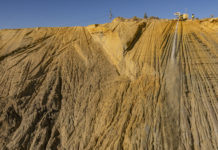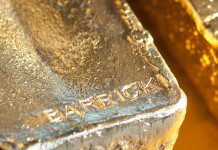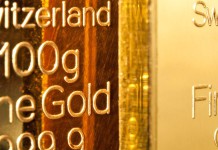
[miningmx.com] – NICK Holland, CEO of Gold Fields, put the group’s only South African mine, the 700,000 oz/year project South Deep, centre stage today saying it needed to put in another big performance in the 2013 financial year in order to establish the group’s newly formed credentials.
“South Deep should be at break-even by the second half of the financial year,” said Holland while presenting the group’s fourth quarter and full-year operating and financial results. “We don’t have the cushion of the other assets [in South Africa].”
This was after unbundling to shareholders the KDC complex and Beatrix mine in a newly formed company, Sibanye Gold – the listing of which was made on Monday [February 11].
Without the mines now in Sibanye Gold, Gold Fields has output of just over two million ounces a year. “It’s about making profit, not making ounces,” said Holland of Gold Fields’ strategy to somehow breathe life into Gold Fields’ stock which, along with most other gold counters, had flatlined amid the gold price bull run.
At production of 273,000 ounces in the 2012 financial year, South Deep comprises about 10% of the new Gold Fields’ profile. But it will become increasingly influential as it ramps up to 700,000 oz/year by 2015.
Holland said the mine performed well in 2012 increasing destressing 75%, which effectively opens up the orebody for mining and increases mining flexibility. More significant destressing was a major deliverable, Holland said.
South Deep is forecast to produce between 305,000 and 320,000 oz in the current financial year.
“South Deep needs to be self-funding by the end of the 2013 financial year. This is a key deliverable for the group,” he added.
Gold Fields has spent R30bn on South Deep including the cancellation of its hedge book which had saved it about $1.3bn in opportunity costs as of end-November. A further R5bn was planned in capital expenditure.
The mine is not only going to be important in Gold Fields’ production profile, but also for the group’s overall reserve and resource base.
While South African production comprises only 28% of total planned output by 2016 (from 48% during the period under review), its South African gold reserves increases to 62% of the overall profile from 53%.
Gold Fields turned in a solid full-year performance notwithstanding the corrosive nature of strike action last year in which some 110,000 ounces of gold production were lost.
Despite a 7% decline in attributable gold production of 3.25 million oz, the group posted a flat operating profit year-on-year of R21bn. The margin including capital expenditure was 17% down on the 25% margin in the 2011 financial year. The outcome was R6.8bn in normalised earnings which excludes items such as gains or losses on foreign exchange (2011: R7.2bn).
Gold Fields paid a final dividend of 75 South African cents/share which when added to the interim dividend is a full-year dividend of R2.35/share, an annual pay-out ratio of 25% which is on the low-end of the group’s 25% to 35% payout ratio scale.
The next two years should also provide some breathing space for Gold Fields from a blance sheet perspective.
Recently on the wrong-end of a credit rating downgrade, the group’s capital expenditure bill would not increase markedly as projects were still in the prefeasibility stage. “There’s nothing to concern us on the funding abilities of both companies [Gold Fields and Sibanye Gold],” said Holland.








